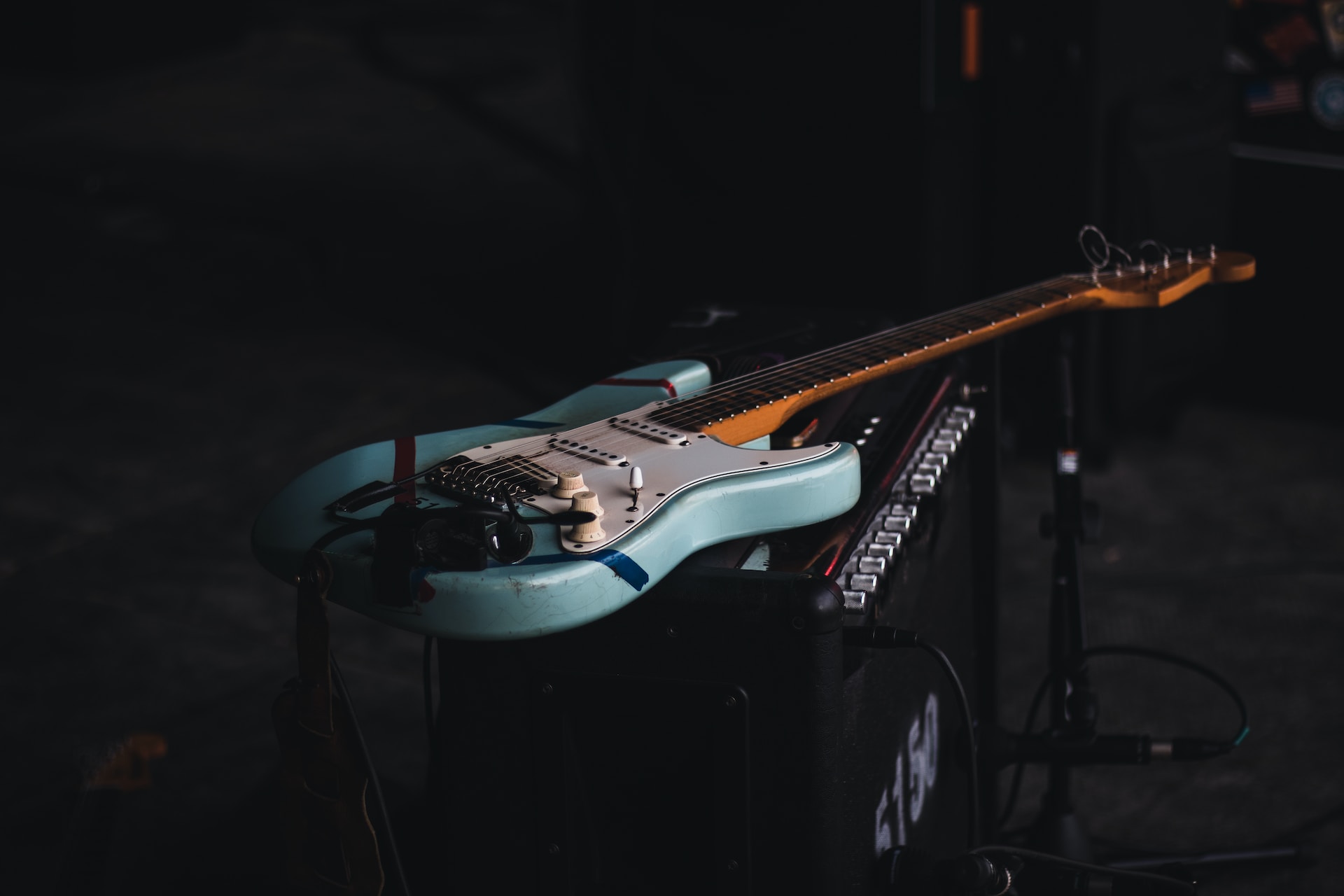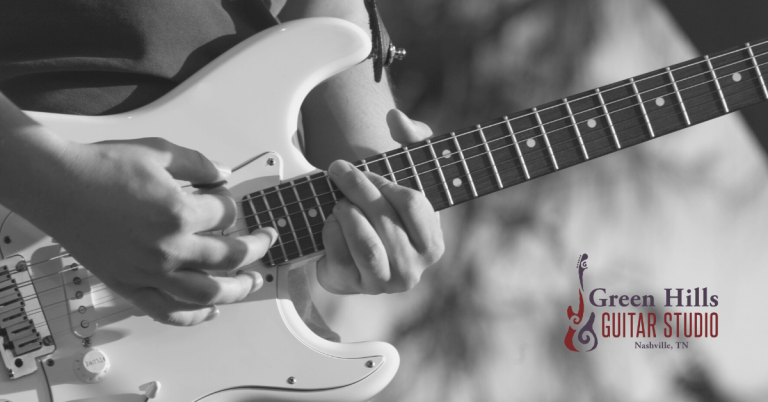How To Practice Triads On Guitar
Knowing how to practice triads is a vital skill for guitar players to develop. These basic chord structures, which contain the harmonic DNA of Western music, consist of three notes that form the foundation of music theory. Triads lay the groundwork for crafting captivating chord progressions and melodies.
In this guide, we’ll discuss the essentials of practicing triads and provide straightforward instructions to elevate your guitar playing. Let’s unlock the potential of triads and enhance your understanding of the mystery of the guitar fretboard.
Why is Understanding Triads Important?
Triads are the fundamental building blocks of harmony—not just for the guitar but for every instrument. They are formed by stacking three notes on top of each other, creating chords that serve as the foundational elements of harmony in music.
The basic structure involves selecting the root note, adding the third (either major or minor), and incorporating the fifth, resulting in major, minor, diminished, or augmented triads.
Each type of triad (major, minor, diminished, and augmented) has its own unique character. Major triads carry a bright and uplifting quality, while minor triads evoke a more melancholic feel. Diminished triads create tension, and augmented triads introduce a sense of mystery and expansion.
Memorizing the locations of triad inversions is key to playing guitar like a pro. Inversions involve rearranging the order of notes within a triad, allowing you to play the same chords in various positions on the fretboard (ie. which note is the lowest note). This versatility is essential for creating smooth transitions between chords and navigating different musical styles.
Mastering triad inversions empowers you to move beyond basic chord shapes, adding depth and complexity to your playing. It opens up new possibilities for creative expression and enhances your overall understanding of the guitar neck.
As we delve deeper into practical tips and exercises, remember that a solid foundation in triads lays the groundwork for advanced musical exploration.
The chord diagram below shows triads in C major. We recommend moving them into other keys once you understand how these shapes sound and relate to one another.
Starting a Triad Practice Routine
To better your understanding of triad relationships on the guitar neck, you’ll need to start incorporating practical exercises into your daily practice routines. Developing daily drills will help build muscle memory and be excellent ear training practice. Play through various triad shapes and inversions consistently to reinforce your understanding.
Next, focus on connecting triads across the fretboard. Start with horizontal connections, then progress to vertical movements, ensuring a comprehensive mastery of the entire neck.
Make your triad practice engaging with creative exercises. Experiment with rhythmic patterns, dynamics, and tempos. Create your own exercises to inject variety into your routine, keeping the learning process enjoyable and stimulating.
If you work this into your daily routine, you’ll not only strengthen your technical foundation but also cultivate a musicality that sets your guitar playing apart. Consistent, focused practice is the key to unlocking the full potential of triads in your repertoire.
To get you started, try this triad exercise from Green Hills Guitar Studio instructor Sam Farkas:
Overcoming Common Challenges
Facing challenges is a natural part of learning new guitar skills. If you encounter finger fatigue, take breaks during practice sessions and gradually extend your playing time. Strengthening your fingers takes time, so be patient.
Improving speed and accuracy requires a focused approach. Start slowly and prioritize precision over speed. As you become more comfortable with the triad shapes, gradually increase your tempo. Consistent, gradual progress is more effective than rushing.
***Notice in the video above that Sam is playing the triad exercise with a metronome set to 100 bpm. We always recommend practicing with a metronome, and we always recommend that you start slow. Only increase speed when you’re able to play with accuracy.
When challenges seem overwhelming, seek guidance from a guitar instructor. A professional can provide personalized feedback, identify specific areas for improvement, and offer tailored exercises to address your unique challenges.
Don’t hesitate to reach out for support – it can significantly accelerate your learning and keep you motivated on your journey to mastering triads. Remember, every guitarist faces challenges, and overcoming them is an essential part of becoming a skilled musician.
The Coda
In summary, mastering triads is fundamental to elevating your guitar playing and understanding music theory. Dedication pays off, so stay committed to steady improvement.
If you’re looking for an expert guitar teacher to help you develop your musical skills, reach out to Green Hills Guitar Studio—we have two locations in Nashville, TN, and also teach online guitar lessons.
Happy practicing!
Frequently Asked Questions
What are triads in guitar playing?
Triads are a group of three notes played together, forming the basic building blocks of chords. They consist of the root note, the third, and the fifth.
Why should I practice triads on guitar?
Practicing triads helps you understand chord structures, improves your fretboard knowledge, and enhances your ability to create harmonically rich music. It also aids in developing better finger coordination and technique.
How can I start practicing triads on the guitar?
Begin by learning the major and minor triads in different positions on the fretboard. Practice transitioning between these shapes smoothly and incorporate them into your chord progressions and solos.
What are the different types of triads?
The main types of triads are major, minor, diminished, and augmented. Based on the intervals between the notes, each type has a distinct sound and structure.
How can triads improve my soloing?
Triads provide a framework for creating melodies and solos that outline a song’s harmony. Using triads in your solos can add clarity and coherence to your improvisation, making your playing more musical.
Can I use triads in different genres of music?
Yes, triads are versatile and can be used in various genres, including rock, blues, jazz, pop, and classical. They are fundamental elements in music theory and are applicable in many musical contexts.
What exercises can I do to practice triads?
Some effective exercises include:
- Playing triads in different positions across the fretboard.
- Practicing triad inversions.
- Integrating triads into chord progressions and songs.
- Using triads in improvisation and solos.
How do triad inversions work?
Triad inversions involve rearranging the notes of a triad so that different notes become the lowest pitch. There are three inversions for each triad:
- Root position: Root note is the lowest.
- First inversion: Third is the lowest.
- Second inversion: Fifth is the lowest.
What resources are available for learning triads on guitar?
Green Hills Guitar Studio offers various resources, including online lessons, instructional videos, and courses tailored to help you master triads and other essential guitar techniques. Check out our website for more information.






